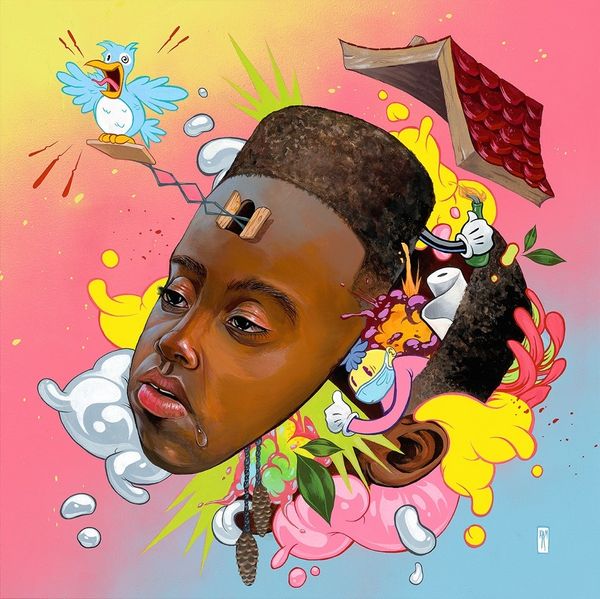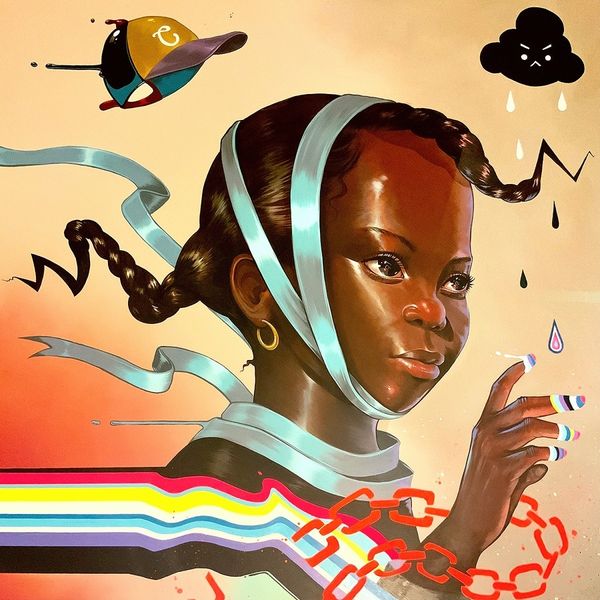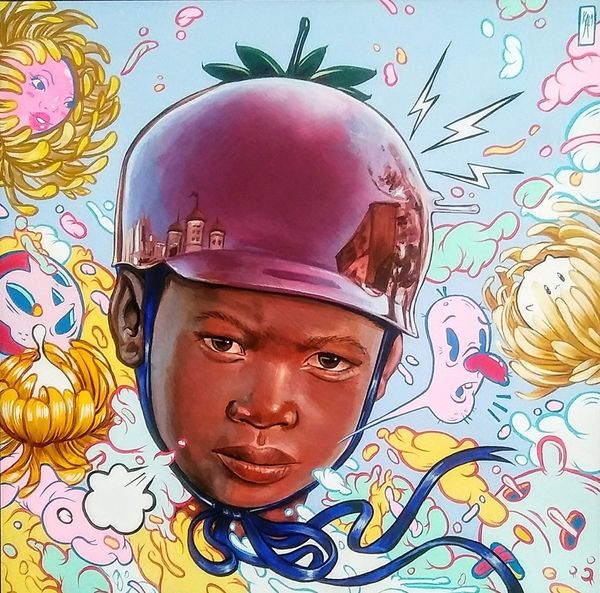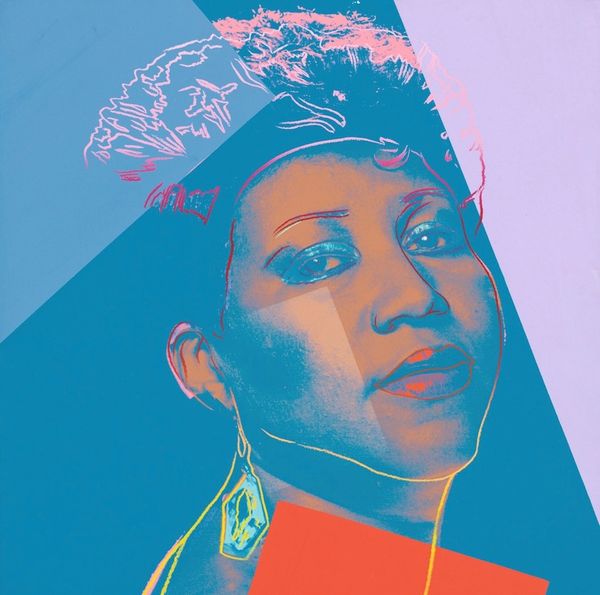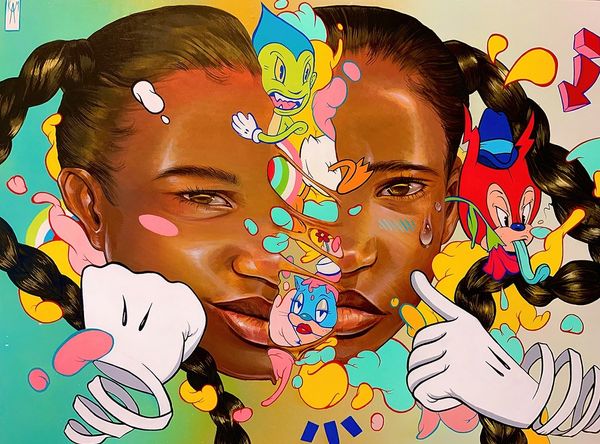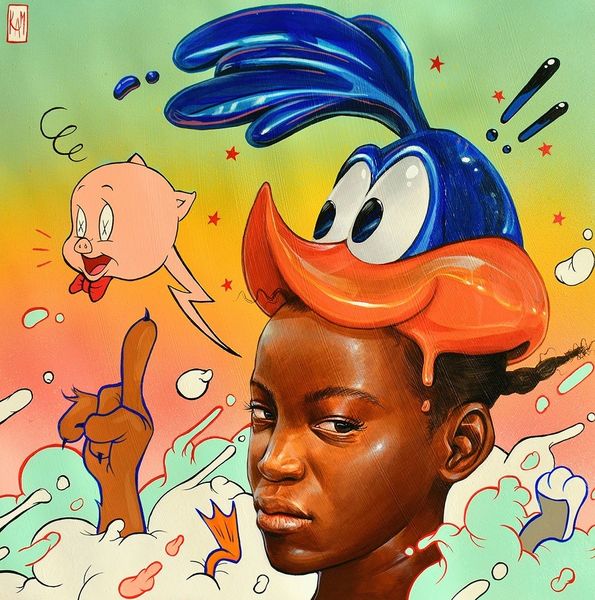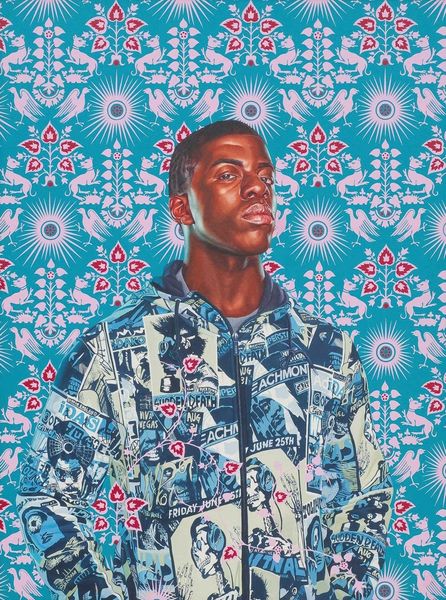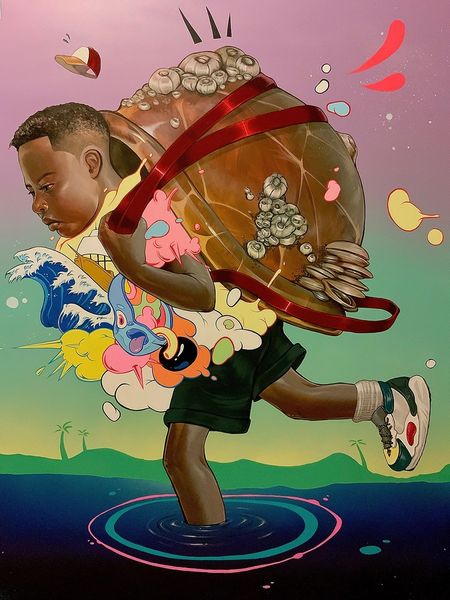
Copyright: Modern Artists: Artvee
Curator: Kayla Mahaffey's acrylic painting, "Fraction," created in 2020, immediately strikes me as vibrant and unsettling. The juxtaposition of realism and surreal elements is really quite something, isn't it? Editor: Absolutely. There's a deliberate fragmentation, a tension between the composed portrait and the bursting cartoonish figures that evokes a feeling of internal conflict. What are your thoughts on the composition itself? Curator: The formal structure is quite sophisticated. The central figure, rendered in careful detail, acts as an anchor amidst the swirling chaos. Note the use of the red ribbon to unify the separate sections of the head. Semiotically, this draws a strong connection between the 'outer' and 'inner' selves. Editor: I see that, and yet, it feels as though Mahaffey is commenting on the external pressures placed on Black women to compartmentalize and perform. The cartoonish elements bursting forth suggest the vibrant, often stifled, inner self trying to break free from the constraints of societal expectations. The ribbon acting almost as a binding force. Curator: An intriguing reading, especially considering the pixelated hand hovering in the background—almost a commentary on digital expectations and performance of self. The hand motif suggests a removal of personal tactility; we’re being manipulated by unseen algorithms or, indeed, outside perceptions. Editor: Yes, precisely! The 'Fraction' becomes less about internal struggle alone and more about the struggle for wholeness in a world that demands fragmentation and curates digital reflections of ourselves through mediated and often biased interfaces. Curator: I appreciate how the use of high-key colors contributes to this sense of both exuberance and unease, that there is, underneath, an undeniable melancholy, even as the colors appear to pop so vivaciously. Editor: Ultimately, "Fraction" functions as a powerful symbol of the complex negotiations individuals undertake to navigate the complexities of identity, particularly for those who find themselves marginalized or misrepresented in mainstream narratives. Curator: It’s a skillful layering of personal and cultural critiques then, using color and formal arrangement to elevate the message far beyond a mere portrait. Editor: Agreed, Kayla Mahaffey uses this painting as a compelling visual articulation of selfhood in the digital age, as well as its wider social and historical implications.
Comments
No comments
Be the first to comment and join the conversation on the ultimate creative platform.


